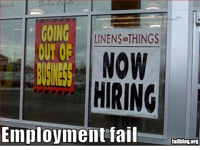 How can technology and innovation reshape education? Union Square Ventures put on Hacking Education – a conference that brought educators and entrepreneurs together to hash this out. Unfortunately they didn’t have any practitioners from the education technology and publishing industries there. After reviewing the well written summary of the discussion I put together the following extended comment to add the perspective of someone who was there, did that, and got the t-shirts.
How can technology and innovation reshape education? Union Square Ventures put on Hacking Education – a conference that brought educators and entrepreneurs together to hash this out. Unfortunately they didn’t have any practitioners from the education technology and publishing industries there. After reviewing the well written summary of the discussion I put together the following extended comment to add the perspective of someone who was there, did that, and got the t-shirts.
As someone who has spent the last 18 years in the Education Technology and Instructional Materials businesses I feel the commentary misses the mark from a business perspective. This isn’t a critique of what was was covered – many of the participants are people I admire and cite frequently – Danah Boyd, Fred Wilson, Katie Salen, Steven Johnson , NT Etuk etc. It is meant to talk specifically about the business challenges of translating these great ideas into practice.
It might be tempting to dismiss folks who have been in the trenches as old school – people who “don’t get it” – but some of us are not clinging to old paradigms but working hard to create new ones. Experience may blind us to new possibilities – but it may also guide you around some of the land mines many of us have already stepped on.
 Coming to Orlando from Wisconsin in January, I expect warmer weather. I didn’t expect 50 degrees to be greeted as a warming trend. And when I saw the conference center adjacent to my hotel was hosting a national beekeeping convention with the alarming title “Keeping the Hive Alive,” I began to watch out for falling metaphors.
Coming to Orlando from Wisconsin in January, I expect warmer weather. I didn’t expect 50 degrees to be greeted as a warming trend. And when I saw the conference center adjacent to my hotel was hosting a national beekeeping convention with the alarming title “Keeping the Hive Alive,” I began to watch out for falling metaphors. The Education Business Blog
The Education Business Blog


 The tribe gathered, bad coffee was drunk, stale muffins were eaten, and we shared insights and guesses about where education technology and publishing are headed in era of tight budgets and ARRA munificence. It was a typical first week of December in New York.
The tribe gathered, bad coffee was drunk, stale muffins were eaten, and we shared insights and guesses about where education technology and publishing are headed in era of tight budgets and ARRA munificence. It was a typical first week of December in New York. The education publishing tribe’s annual gathering is in New York this week. Today kicks off with the
The education publishing tribe’s annual gathering is in New York this week. Today kicks off with the 
 One of the most obvious ways to engage students is to give them access INSIDE of school to all of the amazing Web 2.0 tools that engage them OUTSIDE of school. Who hasn’t tried to get through to his 15 year old with an iPod cranked in his ears and a cell phone glued to his hands?
One of the most obvious ways to engage students is to give them access INSIDE of school to all of the amazing Web 2.0 tools that engage them OUTSIDE of school. Who hasn’t tried to get through to his 15 year old with an iPod cranked in his ears and a cell phone glued to his hands? Clive Thompson over at
Clive Thompson over at 

 How can technology and innovation reshape education?
How can technology and innovation reshape education?